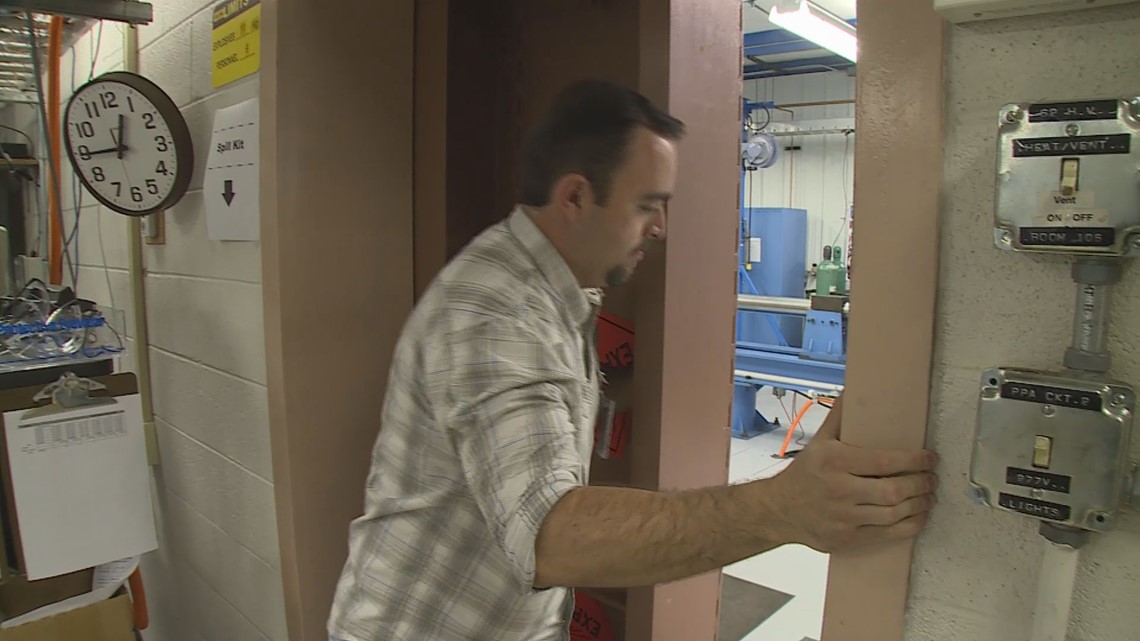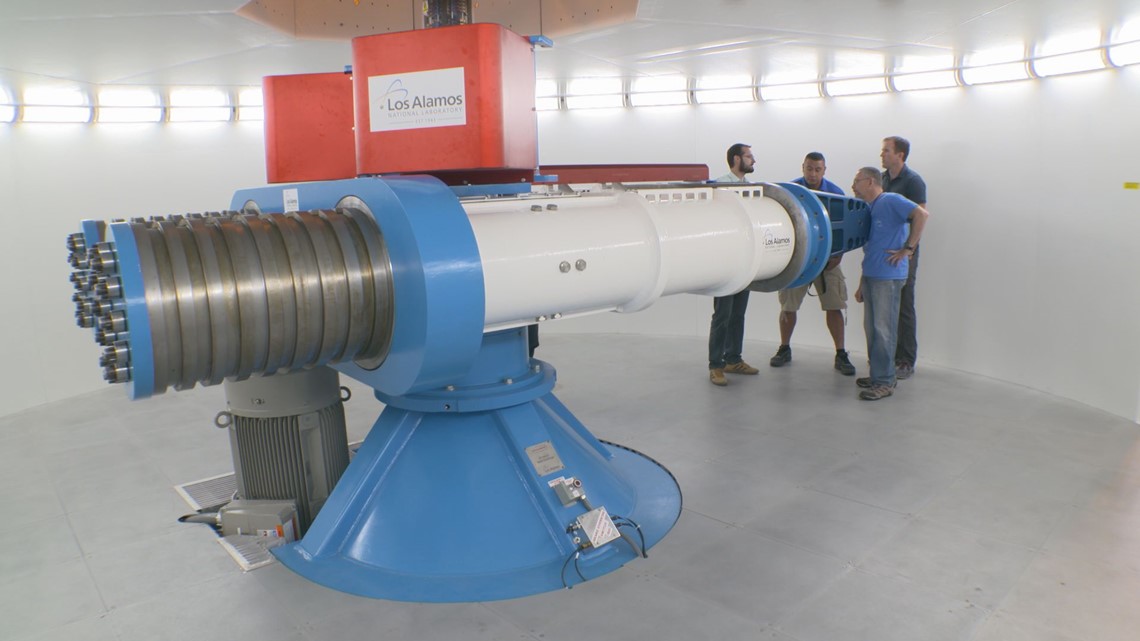LOS ALAMOS, N.M. —
Behind several blast proof doors on the Los Alamos National Lab campus are keys to some of our nation’s closest guarded secrets: exactly how we make nuclear bombs.


This is a simulated high explosives test. The U.S. hasn’t tested a nuke in 27 years.
But, we still have to know if our current weapons work. And, that’s up to the Los Alamos National Lab, in the mountains of New Mexico.
“The answering of that question is a year long process,” said John Sarrao, Deputy Director of Science, Technology, and Engineering at the lab.”The most important thing tom mason, our lab director does is each year he signs a letter to the president that says the us nuclear stockpile is safe, secure and reliable.”
“It's akin to having a 747 sitting in a hangar for 40 years and when you turn the key it has to fly,” said John Sharp, chancellor of the Texas A&M University System, which now helps manage the lab.
There are several ways that testing is done.


Trinity, part of an elite breed of supercomputers, taking up an entire pillarless room and drawing the power of a small city, runs tests digitally -- 24 hours a day, 7 days a week.
And then there's DARHT, two dual particle accelerators built to study the split seconds after a nuclear device is set off.


This is what's called a vessel. It will be attached in the center of the DARHT complex. Both particle accelerators will then xray right through the vessel to see the explosion inside
Across the lab’s 36 square mile campus is a production facility,making the plutonium triggers (the thing that cause an explosion called pits) that go into every nuclear bomb in the U.S. arsenal.
Los Alamos makes about 30 a year.
JAY O’BRIEN: and all of this is deeply classified?
JOHN SARRAO: I would say most of that is classified... There are large parts of plutonium science that are unclassified, just really cool science. the particular size and shape and form that we use in a pit, that's the part that's classified
The work comes with significant risks. A 2017 Department of Energy report stated Los Alamos did not meet safety expectations and found 22 safety infractions over a year.
“I think one of the challenges is, many of the things that we do are extremely dangerous and hazardous,” said Sarrao. “While you would strive to have 0 incidents and 0 events, it's not unnatural that there are some.”
SARRAO: So some bad things happen.
O’BRIEN: To be fair they have the most of any lab
SARRAO: So, yes and, if you actually look at the statistics in a pro rada way, our rates are not worse than any place else.
“Sure it concerns us,” said Chancellor John Sharp. “I mean the reason it was rebid is that the [National Nuclear Security Administration] were concerned about safety lapses under [previous leadership]. But if you’re scared of failure, you probably not ought evene offer yourself up.”
The lab also tackles other global security issues.
“[In] global security… we worry about nuclear nonproliferation, detection of nuclear events, understanding concerns about disease and transmission of disease,” said Nancy Sauer from the lab’s Partnerships and Pipelines office.
In fact, the birthplace of atomic bomb now trains most of those tasked with finding and stopping them. International nuclear inspectors, like those that were key in the Iran deal, are trained there.
And then there’s North Korea.
JAY O’BRIEN: what happens in your building when you see a north korea nuclear test?
JOHN SARRAO: we have people involved, both unclassified and classified, assessing what they did. so, there was something that went bang...was it actually a nuclear device? are what the north koreans saying on tv about yield credible, do we have our own assessments of that?
“Places like Los Alamos, we develop technology to give policymakers options,” adds Alan Carr, Los Alamos’ resident historian. “We don’t make policy here. We never have.”
In a world that’s seen increasing nuclear threats, not just from Kim Jong Un, but Iran and even Russian, Los Alamos is playing a more active role than ever.
But beyond the nuclear front, the lab’s roughly 12 thousand employees have branched out, helping to map the genome, pioneering ways to combat HIV, building components for the mars rover, and more discoveries, left only to classified files and the imagination.


And, adding to the lab’s storied history, as the epicenter of the Manhattan project.
“It’s not just a museum,” said Alan Carr. “To work at a place where we keep adding to the museum every day, it's really remarkable. And there aren't too many places like that.”

